Almost all of us are familiar with the great man-made attractions in China: The Forbidden City in Beijing. The Terracotta Warriors of Xi’an. Shanghai’s skyscraper forest in Pudong.
For a country of its massive size and varied geography, however, it’s surprising how relatively few people outside China appreciate the extent of the country’s other destinations, many of them natural wonders to rival any in the world.
Is it possible to limit a list of China’s superlative attractions to a mere 40? Not really. But a photo memory card goes only so far. And, as this story illustrates, it’s impossible to stop clicking once you get a camera in front of some of China’s most beautiful places to visit. The list is in alphabetical order:
1. Anhui: Hongcun Ancient Village (安徽宏村)
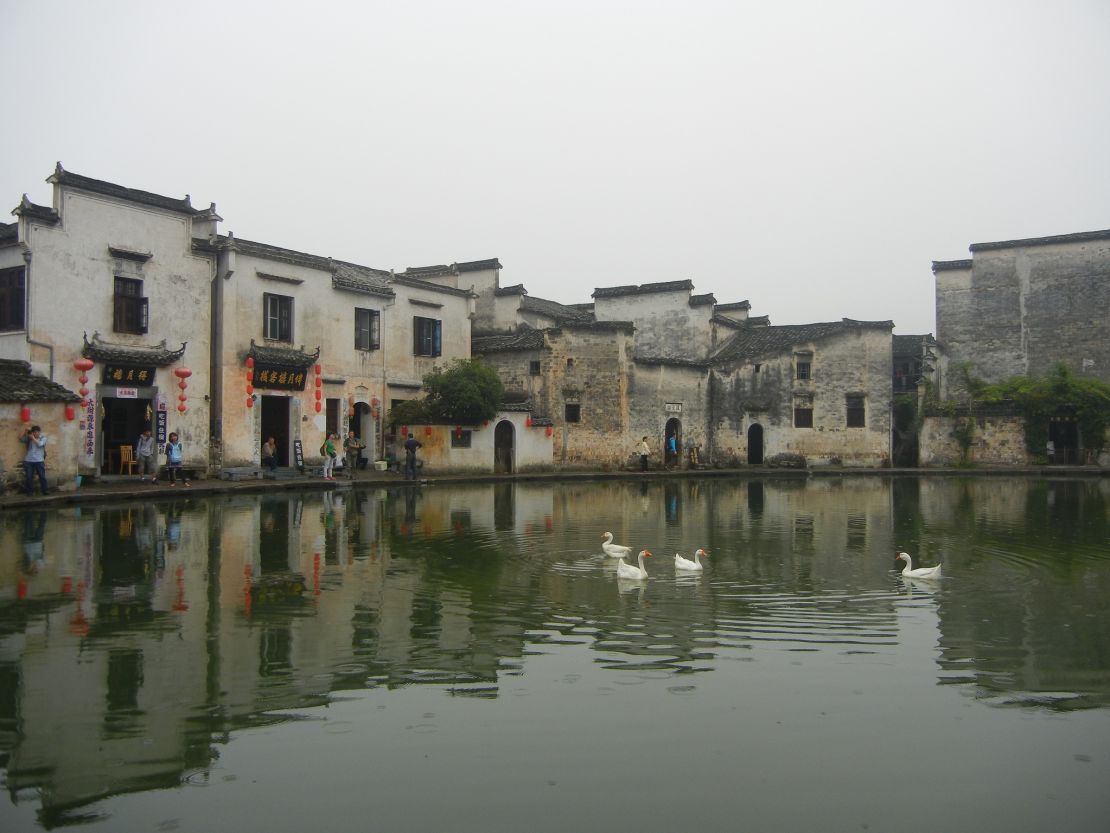
The 900-year-old village of Hongcun has long drawn in-the-know Chinese visitors, who love its tranquil vibe and distinctive architecture. The striking Huangshan mountain backdrop (see No. 2) doesn’t hurt, either. Its classic structures, Moon Lake and picturesque locals have been an inspiration for art students for decades.
Walking the narrow lanes paved with quartzite and seeing farmers working in rice fields, with the reflection of ancient houses in the lake, should provide enough material to get you started on your own visual masterpiece.
Hongcun Village is roughly 70 kilometers northwest of the city of Huangshan in Anhui Province. Major cities connected to Huangshan Airport by direct flights include Beijing, Shanghai, Guangzhou and Xi’an.
2. Anhui: Mount Huangshan (安徽黄山)
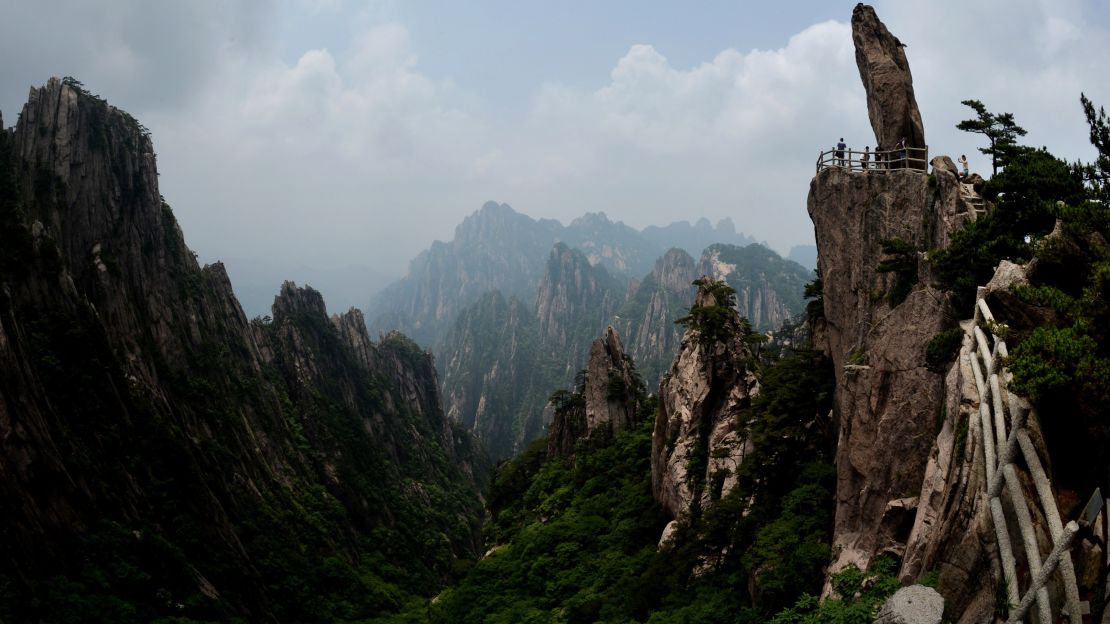
A UNESCO World Heritage Site set amidst “the loveliest mountains of China,” Mount Huangshan, aka Mount Yellow, is a once-in-a-lifetime trek for many Chinese. The 1,863-meter mountain is renowned for its oddly shaped pines, spectacular rock formations, hot springs and seas of misty and melancholy clouds. A trip here provides a mountain of feeling.
Major cities connected to Huangshan Airport by direct flights include Beijing, Shanghai, Guangzhou and Xi’an.

3. Fujian: Mount Wuyi (福建武夷山)
A major landmark in southeast China and a UNESCO World Heritage Site, Mount Wuyi was the setting for the development and spread of neo-Confucianism, influential in East Asia since the 11th century. Bamboo raft drifting in the Nine Bend River (lower gorge) is a popular activity among visitors. The two-hour, eight-kilometer trips provide grand views of Mount Wuyi. It’s the best way to take in the serene beauty of the smooth peaks and clear water.
Mount Wuyi is about 350 kilometers northwest of Fuzhou, the provincial capital of Fujian. Major cities connected to Fuzhou Airport by direct flights include Shanghai, Beijing, Guangzhou and Xi’an.
4. Fujian: Xiapu Mudflat (福建霞浦)
Yes, a humble mudflat is a favorite destination of Chinese photographers. A small region along the southeast China coastline, Xiapu nevertheless has the largest mudflat in the country, encompassing 40 square kilometers and more than 400 kilometers of coastline. Along its tiger-striped beaches, bamboo structures and poles, buoys and fishing vessels provide human counterpoints to the area’s natural beauty.
Admission fee: Free
The nearest hub of Xiapu Mudflat is Fuzhou, provincial capital of Fujian. It’s about 175 kilometers away. Major cities connected to Fuzhou Airport by direct flights include Beijing, Shanghai, Guangzhou and Xi’an.
MORE: Is Xinjiang province the best-kept travel secret in China?
5. Gansu: Echoing Sand Mountain and Crescent Lake, Dunhuang (甘肃省敦煌市鸣沙山和月牙泉)
Echoing Sand Mountain is a series of dunes surrounding Crescent Lake. Named for its distinctive shape and aural characteristics, its echoes can be heard as the wind blows over the dunes. Visitors ride camels up the dunes, which rise to 250 meters. With gardens blooming on its banks, Crescent Lake offers a lovely visual counterpoint to all that sand.
Echoing Sand Mountain and Crescent Lake is six kilometers south of Dunhuang. China Southern operates a daily return flight between Xi’an Xianyang Airport and Dunhuang Airport. Air China flies between Beijing and Dunhuang once a day.
6. Guangdong: Fortress Towers, Kaiping (广东开平雕楼)
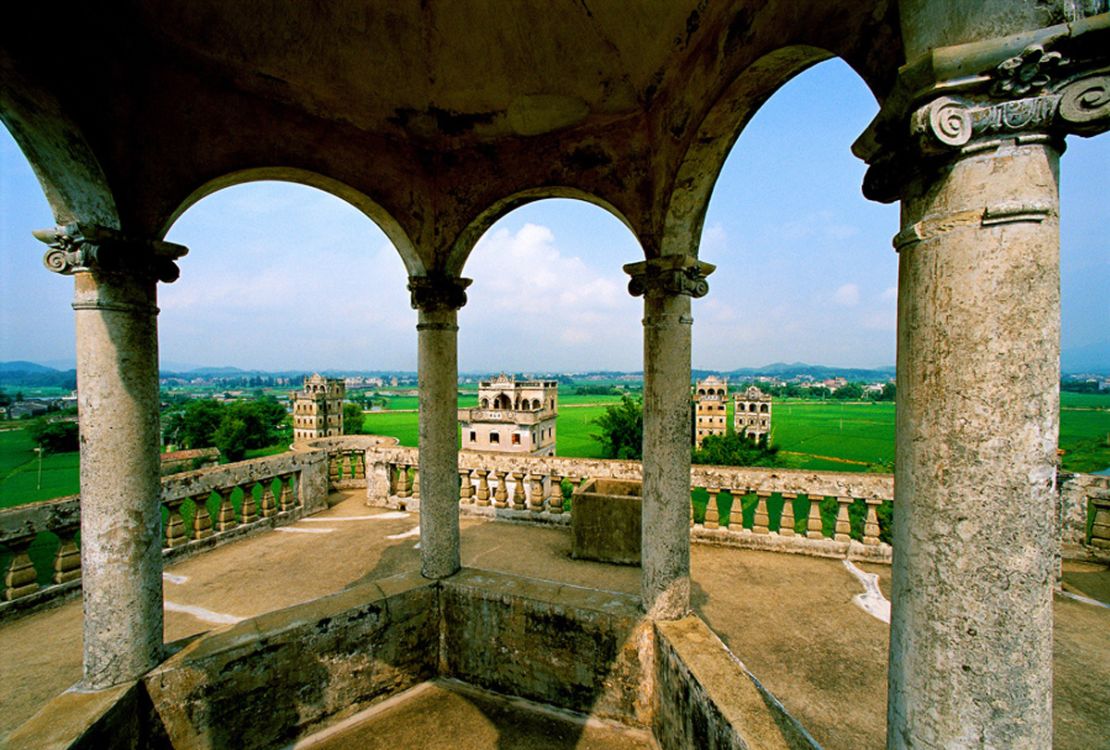
Erected mostly in the early 20th century, the fortress towers at Kaiping were built by famously outbound Kaipingers, who brought home the many architectural styles they saw abroad, including Islamic, Roman and even ancient Greek. The towers were built as a display of wealth, and as a practical way of protecting locals from war and theft. Approximately 1,800 fortress towers still stand amid Kaiping’s vast rice fields.
Kaiping is located 130 kilometers southwest of Guangzhou, the provincial capital of Guangdong. Regular buses are available between Kaiping Bus Terminal and various long-distance bus terminals in Guangzhou. Direct buses and ferries are available between Kaiping and Hong Kong.
The tea lover’s guide to traveling in China
7. Guangxi: Yangshuo (广西阳朔)
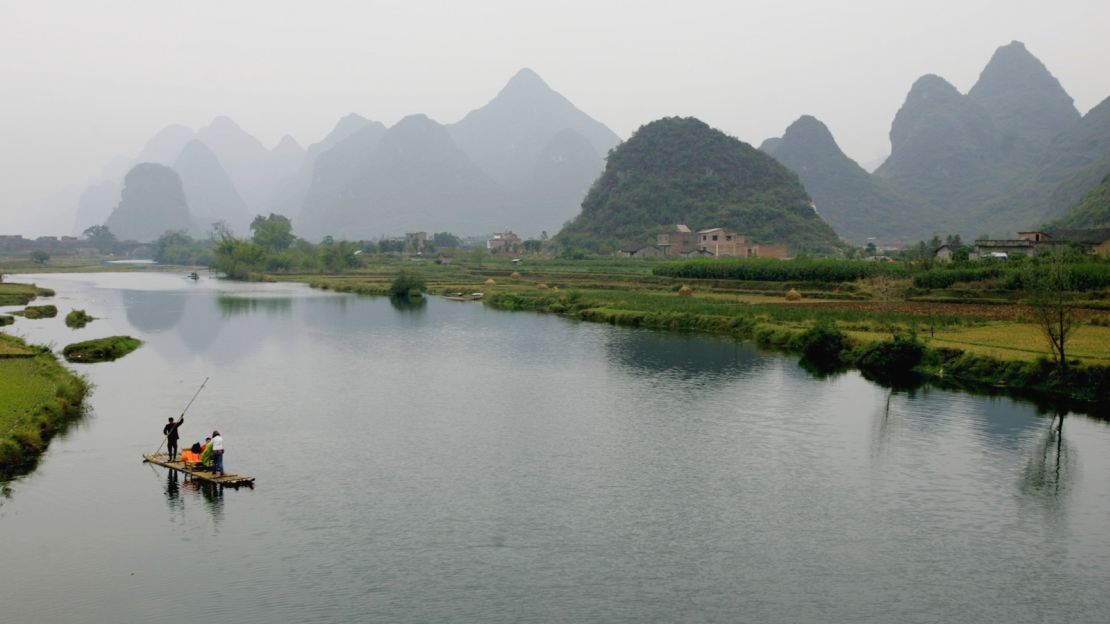
When the Chinese long for views of the nation’s most scenic hills and rivers, they book a bamboo-boat cruise in Yangshuo. The riverside town in southern China is most famous for its karst hills and traditional fishing-village lifestyle.
Downtown is touristy. Visitors can rent bikes and head to the countryside to find a more calming scene: bamboo boats chugging along the river, fishermen setting out with cormorants, farmers toiling in fields with lush peaks soaring high above.
Most travelers reach Yangshuo from Guilin. Buses bound for Yangshuo leave every 15 minutes from Guilin Bus Station on Zhongshan Lu and Guilin South Railway Station. The journey takes around 90 minutes.
8. Guizhou: Huangguoshu Waterfall (贵州黄果树瀑布)
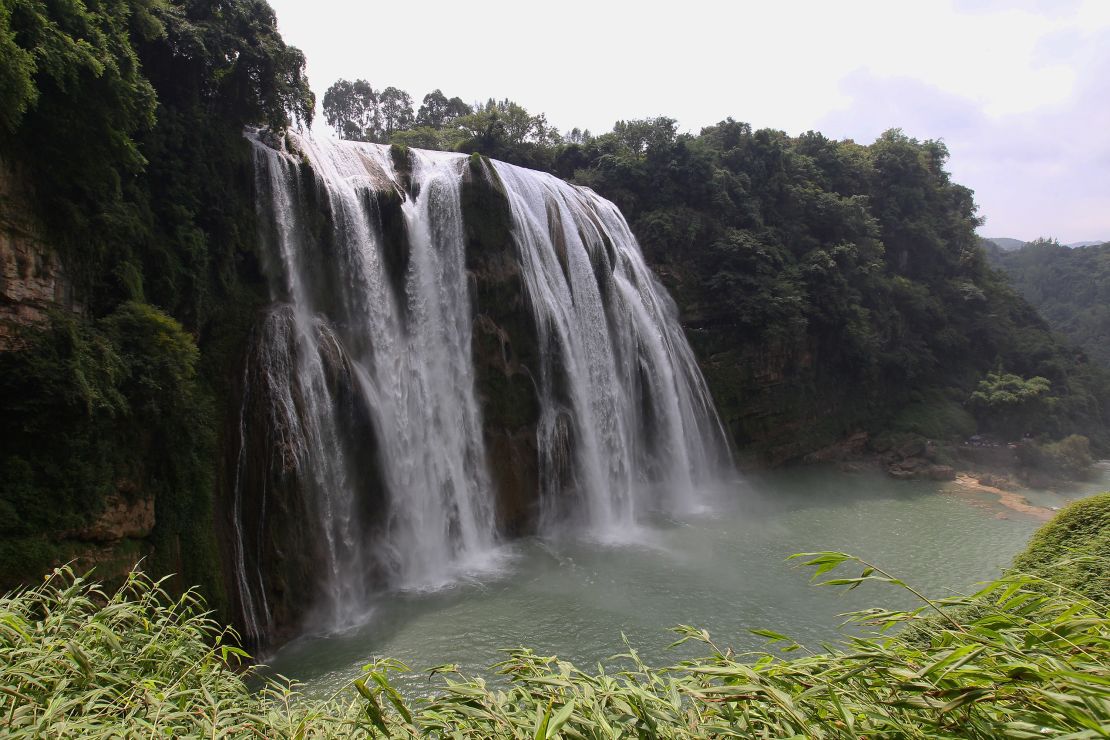
The highest waterfall in Asia, majestic Huangguoshu “Yellow Fruit Tree” Waterfall plunges a dramatic 77.8 meters across a 101-meter-wide span.
It’s one of a handful of mammoth waterfalls in the world that’s accessible for viewing from almost any angle – from above, below, front, back, left or right. The best visiting season is June to August, when the water reaches a peak flow of 700 cubic meters per second. The nearest traffic hub to Huangguoshu Waterfall is Huangguoshu Airport. It’s about six kilometers away. Major cities connected to Huangguoshu by direct flights include Beijing and Guangzhou.
9. Hainan: Guanyin Statue (海南南山海上观音像)
Look beyond the beaches of Sanya to find the world’s largest Guanyin statue, erected near Nanshan, China’s southernmost mountain.
The story goes that the three-sided statue faces mainland China, Taiwan and the rest of the South China Sea – meaning that the bodhisattva blesses not only China, but the whole world. At 108 meters tall, the figure was raised and enshrined in 2005 and is one of the tallest statues on the planet.
The Guanyin Statue is located within Hainan’s Nanshan Culture Tourism District, which is some 40 kilometers from downtown Sanya. Shuttle buses are available between Yalong Bay and Nanshan.
10. Hainan: Yalong Bay (海南省亚龙湾)
Hainan delivers the best tropical setting in China. Yalong Bay is the pinnacle of this beach getaway. The 7.5-kilometer crescent beach is the most popular and developed stretch of Hainan’s southern coastline.
It provides all the quintessential experiences of a Southeast Asian holiday and is a haven for water sports warriors, including surfers who sometimes ride uncrowded waves all day.
If you visit in July, August, October or during Spring Festival, you’ll be surrounded by Chinese families, mostly sporting old-school swimsuits.
Yalong Bay is 28 kilometers southeast of Sanya. Sanya Airport operates flights to all major Chinese cities, as well as nine international cities including Singapore, Hong Kong, Tokyo and Seoul.
MORE: Spectacular, rarely seen images of China’s railways
11. Hebei: Chengde Mountain Resort/Rehe Palace (河北承德避暑山庄/热河行宫)
A UNESCO World Heritage Site, this mountain resort was once a summer palace used by Qing Dynasty emperors on holiday. Delicate gardens and a 70-meter pagoda remain. Lush grasslands, marvelous mountains and tranquil valleys still make it a cool place to avoid the heat.
Shuttle buses depart from Beijing to Chengde hourly during the day, ticket is RMB 50
12. Heilongjiang: Saint Sophia Cathedral, Harbin (黑龙江省哈尔滨市圣索非亚大教堂)
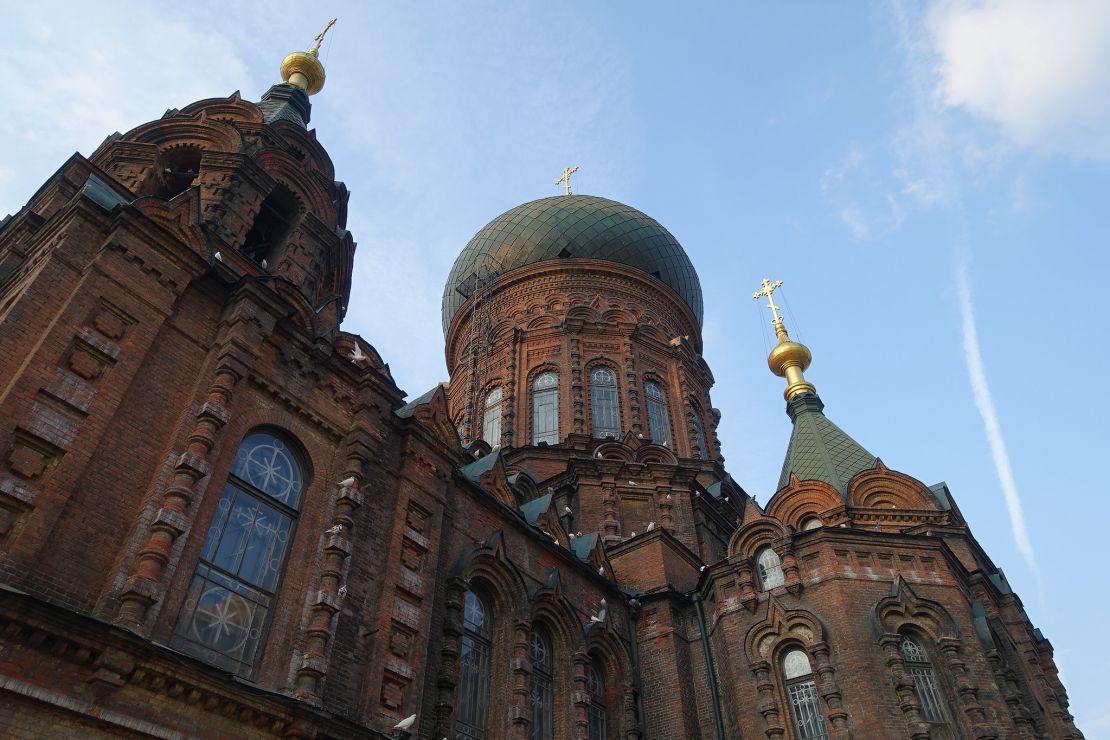
The largest Orthodox church in East and Southeast Asia stands in China’s most Russian-accented city, Harbin.
Russian expats built the 54-meter-tall, 721-square-meter neo-Byzantine structure in the early 20th century as a spiritual symbol for the local Orthodox community after the Russian-Japanese War. The church was used as a warehouse by the Communist Party for about two decades and is now a state-run museum showcasing the city’s architecture, art and heritage.
88 Xiulong Jie, Daoli District, Harbin, Heilongjiang 黑龙江省哈尔滨市道里区透笼街88号
13. Henan: Longtan Valley (河南龙潭大峡谷)
Nope, you’re not in Utah. It’s Henan. This 12-kilometer, U-shaped valley marked by a stripe of purplish red quartz sandstone has earned the name, “The No.1 Valley of Narrow Gorges in China.” Its steep cliffs, lush vegetation and jagged valley attract sightseers from all over China.
The nearest traffic hub to Longtan Valley is Luoyang, a major city in Henan Province. It’s about 60 kilometers away. Major cities connected to Luoyang Airport by direct flights include Shanghai, Beijing, Guangzhou and Hong Kong.
14. Hubei: One Incense Pillar, Enshi Canyon (湖北恩施大峡谷一柱香)
This is not the profile of Beaker the Muppet’s giant Chinese cousin; it’s a karst pillar standing between the cliffs and peaks of the 108-kilometer-long Enshi Canyon, China’s answer to the Grand Canyon. This incense stick-shaped structure is 150 meters tall, but only 4 meters wide, making it incredible that it stands at all, let alone that it’s survived several major earthquakes.
Local legend holds that the pillar is a piece of incense given by a deity to the ingenious Tujia people. The residents could light it in times of disaster and the deity would descend to help.
Enshi is approximately 230 kilometers west of Yichang, site of the Three Gorges Dam, and 530 kilometers west of Wuhan, the provincial capital of Hubei.
Flights are available to Yichang twice a week (40 minutes) and to Wuhan twice a day (80 minutes).
MORE: How to explore the other ‘great wall’ of China
15. Hubei: Shennongjia (湖北神农架)
More than 400 people claim to have seen a Bigfoot-like creature among the lush vegetation of Shennongjia over the past century, yet no hard evidence has been found to prove the “yeti’s” existence.
The 3,200-square-kilometer nature reserve also purports to be “the only well-preserved sub-tropical forest ecosystem in the world’s mid-latitudes,” with more than 5,000 species of animals and plants. It’s home to snub-nosed or golden monkeys (金丝猴), a rare and protected species in China.
Wuhan is the nearest major city and traffic hub to Shennongjia. From Wuhan’s long-distance bus station at Xinhua Lu, take the daily coach to Xingshan County (兴山县). Then transfer to a mini-bus from Xingshan to Shennongjia.
16. Hunan: Fenghuang (湖南凤凰)
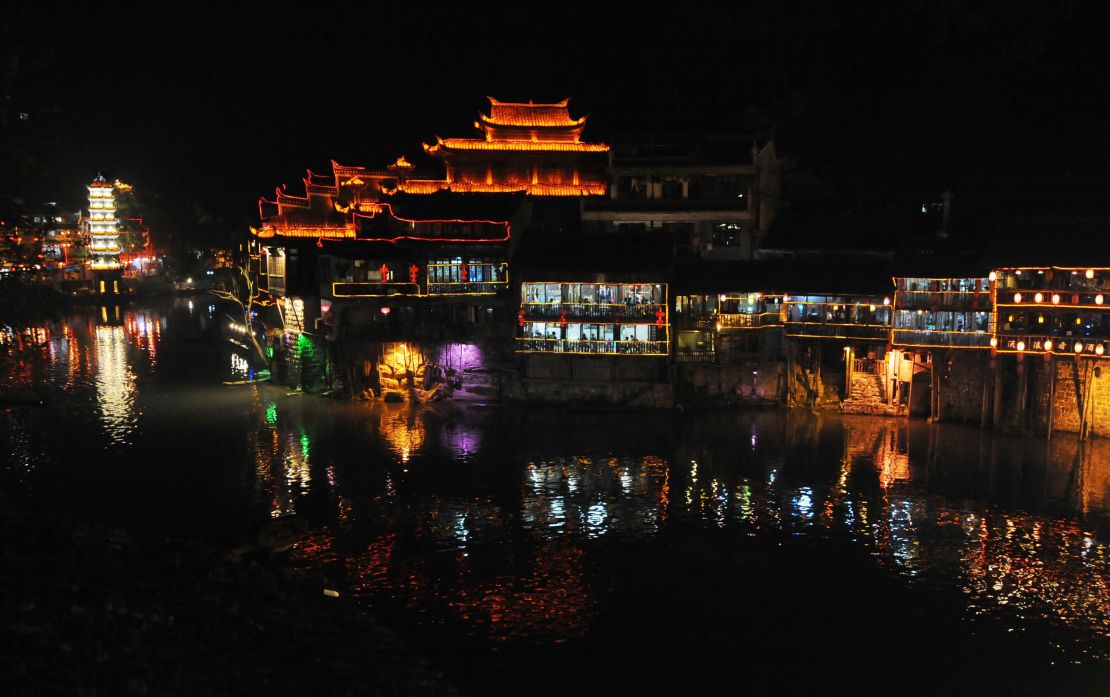
These stilted houses are the dream lodgings of Chinese art and literature lovers. Every year, armies of young backpackers flock to the ancient town of Fenghuang (which literally means “Phoenix”) for its rich Miao and Tujia ethnic culture.
Many also come to pay homage to celebrated Chinese writer Shen Congwen (沈从文), whose novel “Frontier City” put the 1,300-year-old town in limelight. Fenghuang maintains its original layout and architecture, with around 200 residential buildings, 20 streets and 10 winding alleys, all of which date as far back as the Ming dynasty.
Fenghuang is 430 kilometers west of Changsha, the provincial capital of Hunan. Long-distance buses are available four times a day from West Changsha Bus Terminal to Fenghuang Bus Terminal for RMB 130. The journey takes nearly four hours.
17. Hunan: Zhangjiajie (湖南张家界)
The giant quartz sand pillars of Wulingyuan are said to have been the inspiration for James Cameron’s floating mountains on the planet Pandora in his Oscar-winning movie “Avatar.”
In reality, the Wulingyuan area in Zhangjiajie, a city in Hunan Province in southern China, is home to more than 3,000 of these stone columns. The tallest pillar in the stone forest stands more than 400 meters high. Wulingyuan authorities have renamed one of the pillars “Mount Hallelujah,” the name of the main floating peak on Pandora.
Zhangjiajie is about 320 kilometers northwest of Changsha, Hunan’s provincial capital and the region’s main traffic hub.
Trains and direct flights are available between Zhangjiajie and many Chinese cities, including Beijing, Shanghai and Guangzhou.
18. Inner Mongolia: Singing Sand Bay (内蒙古响沙湾)
The sand is singing, but what’s the song? Singing Sand Bay, aka Yinken Sand Bay, is a 110-meter-high dune, 50 kilometers from Baotou, a major city of Inner Mongolia. Sliding off a 45-degree angle, the wind here is said to sing in soft whispers.
Batou can be reach from many major cities in China by air, including Shanghai, Beijing and Guangzhou
19. Jiangsu: Brahma Palace (江苏梵宫)
Feng shui and Buddhism have deep influences on China. Both can be found at Brahma Palace. Beneath the foot of Little Lingshan Mountain, and near Taihu Lake and the 88-meter-tall Lingshan Giant Budda, the palace epitomizes Chinese feng shui – it’s surrounded by mountains and water, portending both good fortune and health.
Built for the Second World Buddhism Forum in 2009, the Buddhist theme park is filled with luxury, with gold and glamor gilding many surfaces.
Major cities connected to Wuxi Airport by direct flights include Beijing, Shanghai, Guangzhou.
Unseen Nanjing: The hidden side of China’s ancient capital
20. Jiangxi: Mount Lu (江西庐山)
A UNESCO World Heritage Site since 1996, Lushan National Park, with its centerpiece of Mount Lu, is more than a tourist attraction. It’s a cultural and spiritual symbol of China. Upward of 1,500 famed painters and poets from various periods of ancient and modern China – Li Bai (李白) of the Tang Dynasty and Xu Zhimo (徐志摩) in 1920s, to name two – have traveled here to be inspired by Lu. Masterpiece poems are engraved in calligraphy on the mountain cliffs.
The nearest traffic hub is Mount Lu Airport. It’s about 10 kilometers away. Major cities connected to Mount Lu Airport by direct flights include Beijing, Shanghai and Guangzhou.
21. Jiangxi: Wuyuan (江西婺源)
“One of the most beautiful rural areas in China.”
That’s how Wuyuan (a small county located at the junction of Anhui, Jiangxi and Zhejiang provinces in eastern China) is best known. Colorful blossoms and a relaxed, countrified pace attract hundreds of thousands of visitors each spring.
The nearest traffic hub in Wuyuan County is Jingdezhen, a major city in Jiangxi Province. It’s about 98 kilometers away. Major cities connected to Jingdezhen Airport by direct flights include Beijing, Shanghai and Shenzhen.
22. Jilin: Heaven Lake, Changbai Mountain (吉林长白山天池)
The vodka-clear Heaven Lake is said to resemble a piece of jade surrounded by 16 peaks of the Changbai Mountain National Reserve, near the border of North Korea. With an average depth of 204 meters, it’s the deepest lake in China.
This is also a hot spot for water monster fans – in the last two decades China travelers have reported accounts of a lake creature as long as 20 meters. Sunny days here are rare. July to September is the best time to visit. Even then, it can be chilly and wet.
The nearest traffic hub to Heaven Lake is Changbai Mountain Airport. It’s about 60 kilometers away. Major cities connected to Changbai Mountain Airport by direct flights include Beijing, Shanghai and Shenyang.
23. Liaoning: Benxi Water Cave (辽宁本溪水洞)
Stalagmites and stalactites? You never know when those school lessons will come in handy. Exploding with color, the Benxi Water Cave was formed more than five million years ago. Today its main sections are a “drought cave” and a “water cave.”
A dramatic array of stalagmites and stalactites are covered in vibrant greens, yellows and reds. The water cave contains the world’s longest underground river at 5.8 kilometers. Of this, only 2.8 kilometers are accessible by boat.
The drought cave is rather small. Only 300 meters are open to the public. The temperature in the cave remains a constant 10 C. Sweaters and pants are highly recommended.
MORE: Librairie Avant-Garde: China’s most beautiful bookshop
24. Liaoning: Golden Pebble Beach National Resort, Dalian (辽宁金石滩)
Along 30 kilometers of Golden Pebble Beach (it’s also known as the Jinshitan Scenic Area) just outside downtown Dalian, ancient rock formations have been twisted by time and elements into bizarre replicas of animals – camels, monkeys, tigers, even dinosaurs.
The largest is a 40-meter-high rock named after a “dinosaur who explores the sea.” It’s said to resemble a giant dinosaur bathing in the sea.
Golden Pebble Beach is in the northeast of Dalian City. It can be reach by Dalian’s light rail which runs regularly
25. Ningxia: Sand Lake (宁夏沙湖)
More than 1 million migrating birds of various species stop over at this wetland in Ningxia twice a year (April-May, September-October). The rest of the year, around 200 species of birds call the wetlands home, including a large number of protected species, such as black cranes and the Chinese merganser.
The area is also the reported habitat of giant salamanders that grow as long as 1.6 meters. Desert, water and reed mashes blend in this 80-square-kilometer area, which forms a unique geographic phenomenon called sand lake (“sha hu” in Mandarin).
Sand Lake is 56 kilometers north of Yinchuan, the provincial capital of Ningxia. Buses are available daily between Sand Lake and Yinchuan’s North Gate Bus Terminal.
26. Qinghai: Qinghai Lake (青海省青海湖)

China’s largest inland saltwater lake. This view is one of the great draws of Qinghai Province in China’s far northwest every June and July. The lake sits 3,205 meters above sea level and is a three-hour bus ride from the nearest traffic hub of Xining. Few tourists make it to this part of China to enjoy this oil painting of a scene, not counting packs of mad cyclists who come for Tour de Qinghai Lake International Cycling Race every summer.
Tour companies in Xining organize trips to Qinghai Lake. Buses bound for Qihai Lake are available every morning (7:45 a.m.) from Xining Train Station.
MORE: An architectural wonderland hidden in a Chinese forest
27. Shaanxi: Xi’an City Wall (陕西西安城墙)
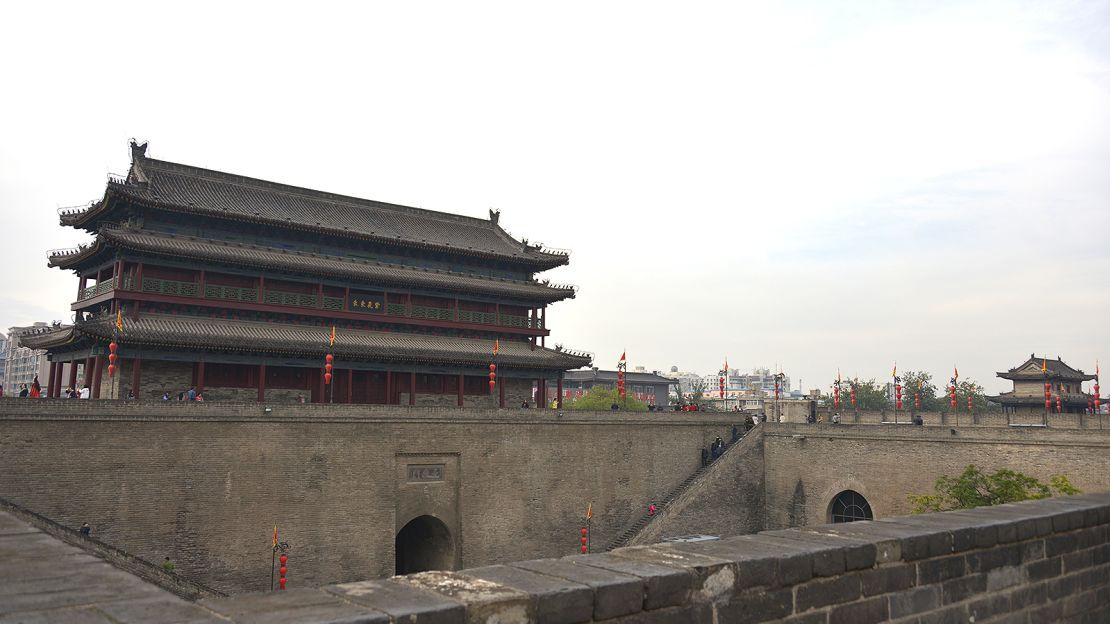
In addition to the world-renowned Great Wall, the city wall belonging to Xi’an, first constructed more than 2,000 years ago, also represents the power and wisdom of the Middle Kingdom in its ancient heyday.
What exists of the wall today are remains from 1370, when during the Ming Dynasty the fortification was 13.7 kilometers long, 12 meters high and between 15 to 18 meters wide. It now surrounds downtown Xi’an. Spend three or four hours biking along the wall and you’ll get great views of China’s old capital city.
Climb up the city wall from Yongning Gate (永宁门) on Nan Jie in Xi’an’s Xincheng District.

28. Shandong: Trestle Bridge, Qingdao (山东青岛栈桥)
So that’s why they call it the Yellow Sea. As old as the city of Qingdao, the Trestle Bridge has sat astride the Yellow Sea since 1892. First built for the reception of Li Hongzhang (李鸿章), a prominent statesman during the Qing Dynasty, Trestle Bridge has since become a symbol of the city.
Walking the 440-meter-long bridge is a great way to enjoy breezes coming off the sea. At one end is Huilange Pagoda, a classic beauty that hosts historic and cultural exhibits throughout the year.
Seaside Resort, 11 Jingshan Lu, Qingdao, Shandong Province (山东省青岛市京山路11号海滨风景区)
29. Shanxi: Hukou Waterfall (山西壶口瀑布)
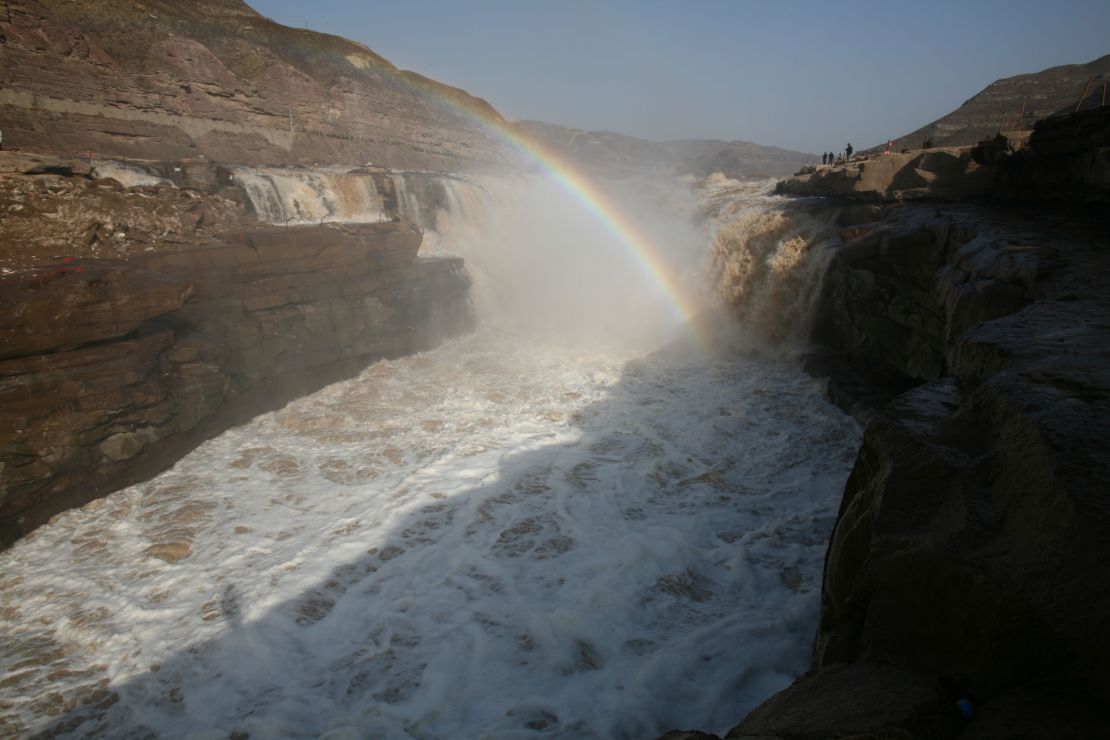
According to some, the most magnificent waterfall in the country. As the largest waterfall on the Yellow River, and second largest in China, Hukou Waterfall is known around the country for once gracing the RMB 50 note.
At 20 meters high and 30 meters wide, the fall is located on the border of Shanxi and Shaanxi provinces. The May to October flood season is the best time to visit, when water flow and velocity increase, sometime swelling the fall into a 50-meter-wide spectacular scene.
The nearest traffic hub to Hukou Waterfall is Yuncheng Airport. It’s about 82 kilometers away. Major cities connected to Yuncheng Airport by direct flights include Beijing, Shanghai and Guangzhou.
Yellow River Hukou Waterfall Scenic Area, Hukou Town, Ji County, Linfen, Shanxi Province (山西省临汾市吉县壶口镇黄河壶口瀑布景区)
30. Shanxi: Yungang Grottoes (山西云冈石窟)
This 1,500-year-old site is an important Buddhist landmark. It houses 252 caves and more than 51,000 Buddha statues, most carved between the fifth and sixth century during the North Wei Dynasty. The sandstone statues – the tallest stands 17 meters, the tiniest two centimeters – combine multiple styles of Buddhist art, including Chinese, Gandhara and Persian. Grottoes 16 through 20 are the five best preserved caves. They shelter five Buddhas modeled after five Wei emperors.
Yungang Grottoes are 18 kilometers west of Datong city. Direct flights are available between Datong and Beijing, Shanghai and Guangzhou.
MORE: What happens when all of China goes on vacation at once
31. Sichuan: Hailuogou Glacier National Park (四川海螺沟)
Legend holds that only the lucky will be treated to this view. Also known as “Conch Gully,” Hailuogou park sits at the eastern foot of Gonggar Mountain in southwest China’s Sichuan province.
According to legend, the gully was a wasteland until a renowned Tibetan monk played his treasured conch there and attracted many animals, who became so enchanted with the place that they took up residence. To memorialize the monk and his conch, the gully ever after became known as Conch Gully.
The magnificent glacier, which drives through woodlands, cliffs, peaks and gullies, is accessible all year round. It appears at its best in early morning sunshine. More than 10 hot springs are spread beneath the glacier. Two are open to the public, including one at an elevation of 2,600 meters.
The nearest traffic hub to Hailuogou Glacier National Park is Chengdu, capital city of Sichuan province. It’s about 300 kilometers away. Major cities connected to Chengdu Airport by direct flights include Shanghai, Beijing, Guangzhou and Xi’an.
32. Sichuan: Jiuzhaigou (四川九寨沟)
This massive lake is the crown jewel of Jiuzhaigou, a region full of stunning alpine lakes and waterfalls.
The lake is filled with incredible water that changes color throughout the day and year. The color comes from the reflection of the surrounding landscape, as well as algae and calcified rocks at the bottom of the shallow lake. Autumn is the best time to visit, when the lake surface appears as a multihued painter’s palette.
Direct flights are available between Jiuzhaigou’s Jiuhuang Airport and major Chinese cities including Beijing, Shanghai, Xi’an and Chengdu. The nearest traffic hub to Jiuzhaigou is Chengdu, the provincial capital of Sichuan, which is one hour by air or 11 hours by bus south of the lake.
33. Tibet: Potala Palace (西藏布达拉宫)
The former winter home of the Dalai Lama and seat of the former Tibetan ruling government, this nine-story attraction stands 3,700 meters above sea level, making it the highest palace on the planet. The Potala Palace’s current incarnation is a state museum. More than 1,000 rooms remain, as well as the original layout of the White Palace (living quarters of the Dalai Lama) and the Red Palace (once a spiritual center of Tibetan Buddhism).
All visitors to the palace are restricted to a one-hour stay.
Potala Palace issues a limited number of tickets every day. To secure a ticket during peak season (May 1-October 31), independent travelers are advised to pick up a ticket coupon outside the palace a day before their visit.
34. Xinjiang: Lake Karakul (新疆喀拉库勒湖)
This stunning view is the reward after a thrilling ride over one of the world’s most dangerous roads, Karakoram Highway. The many “landslide site” signposts along the way haven’t stopped devoted travelers, who mostly set out from Kashgar (喀什), the westernmost city in China. Standing 3,600 meters above sea level on the Pamir Plateau, the glacier lake’s water reflects the surrounding mountains like a huge mirror. Best time to go is May to October.
No public transportation is available between Kashgar and Karakul, but plenty of tour companies and hotels in Kashgar organize small groups and customized trips to the area. The lake is about four hours from Kashgar by road.
Palace offers rare insights into China’s modern history
35. Xinjiang: Nalati Grassland (新疆那拉提草原)
This sub-alpine meadow is so distinct in northwest China that, according to legend, one of Genghis Khan’s troops was so awed by its color that he gave the area the name “Nalati” (meaning “place where the sun emerges” in Mongolian). The prairie is a great place to experience Kazak customs. Locals still play traditional sports, live in yurts and raise falcons to hunt for the family dinners. Best time to go is July to October.
China Southern operates a daily return flight between Urumqi and Nalati.
36. Yunnan: Three Pagodas, Dali (云南省大理崇圣寺三塔)
These Buddhist towers are the chief landmark of Dali, an ancient town in China’s southwest Yunnan Province. The main tower was first built in mid-ninth century in the hope to easing regular flooding. At 69 meters and 16 stories high, it was a “skyscraper” for the Tang Dynasty and is still the tallest pagoda in China. Each of it tiers is decorated with Buddha statues.
The other two identical towers stand 42 meters and were erected almost a century later. The three holy structures form an equilateral triangle. Shutterbugs can get great shots from many different angles.
The three pagodas are just north of downtown Dali. Direct flights (30 minutes) and train (eight hours) are available between Dali and Kunming, the provincial capital of Yunnan.
37. Yunnan: Pudacuo National Park, Shangri-la (云南香格里拉普达措国家公园)
Pudacuo is the first national park in China to meet the criteria set by The World Conservation Union, a major global environmental organization. More than 20% of the country’s plant species and around one-third of its mammal and bird species call this wetland plateau home. Photographers especially love the area’s many types of orchids and China’s highly endangered black-necked cranes. In Bita Lake in the park, the Bita double-lip fish is an ancient fish dating back 2.5 million years.
Pudacuo is 22 kilometers east of Shangri-la, a tourist town in northwest Yunnan Province.
38. Zhejiang: Nanxi River (浙江楠溪江)
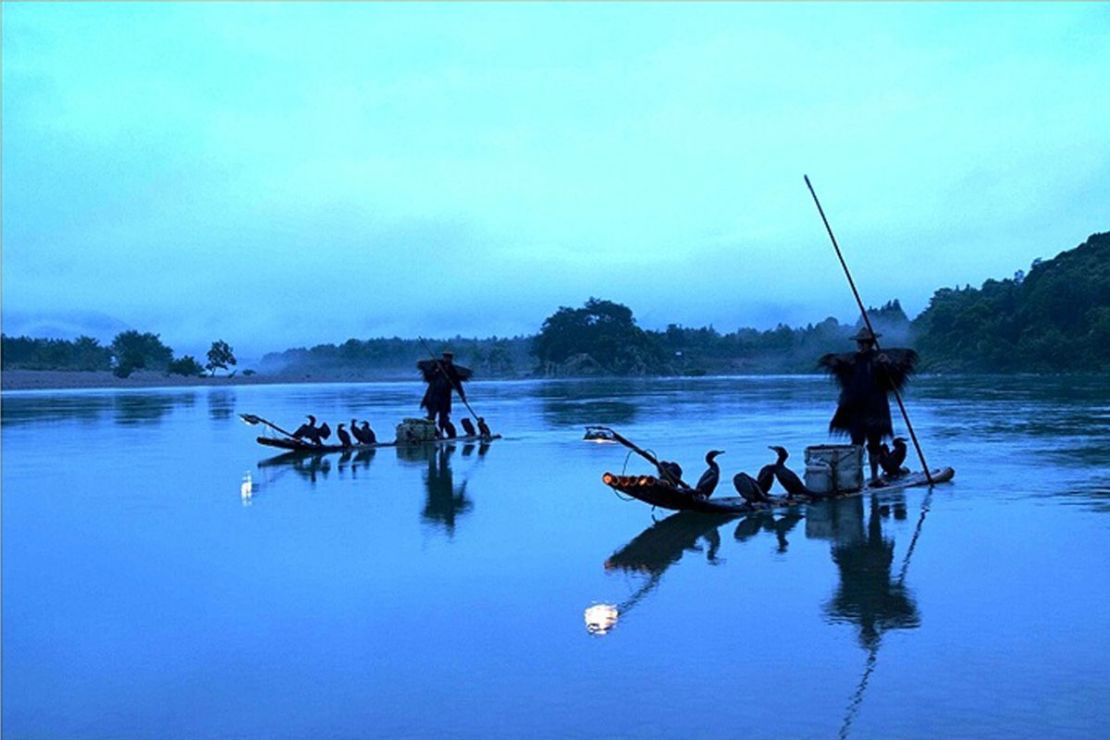
With its mountain backdrop and shores lined with ancient houses, the Nanxi River inevitably became the cradle of classic Chinese water-and-ink painting. By drifting down the Nanxi River on a bamboo craft, travelers can enjoy views of locals doing laundry along the river and fishermen employing traditional methods of using cormorants to catch fish. The xiangyu is a rare freshwater fish unique to the Nanxi.
The nearest traffic hub to Nanxi River is Wenzhou, a major city in Zhejiang Province. It’s about 23 kilometers away.
Major cities connected to Wenzhou Airport by direct flights include Beijing, Shanghai, Guangzhou and Hangzhou. There are nine established drifting routes on the river, ranging from one to 10 kilometers in length.
China’s cliff-clinging glass skywalk opens to public
39. Zhejiang: Thousand Island Lake (浙江千岛湖)
In the 1950s, the Chinese government evacuated and flooded 928 square kilometers of villages, plains and hills to build a reservoir. The indirect result was a surreal view. Around 1,078 islands dot the lake.
Outdoors activities are the draw of this ginormous recreation and resort area – speedboating, water skiing, animal-themed island-hopping, mountain climbing. Travelers can also find excellent seafood and everything from budget cabins to five-star hotels.
Direct buses run from Hangzhou West Bus Station to Thousand Island Lake Town. Buses depart every 30 minutes – then take a taxi or bus to the scenic area.
40. Zhejiang: Yunhe Rice Terrace (浙江云和梯田)
“Here’s an idea. Let’s make farming even more difficult.”
Literally meaning “peaceful clouds,” Yunhe and its surrounding rice terraces have been home to farmers for at least 1,000 years. Winding in a maze up mountainsides from 200 to 1,400 meters, individual terraces can be constructed of as many as 700 layers. Rainy days are the best time to visit, when steam from evaporating river water floats through the terraces, creating a kind of agricultural dreamscape.
Yunhe County is 67 kilometers southwest of Lishui city. Shuttle buses between Yunhe and Lishui are available at Lishui Train Station. To get to Lishui, take a train from big cities including Shanghai, Hangzhou and Beijing.
Editor’s note: This article was previously published in 2012. It was reformatted and republished in 2017.


























